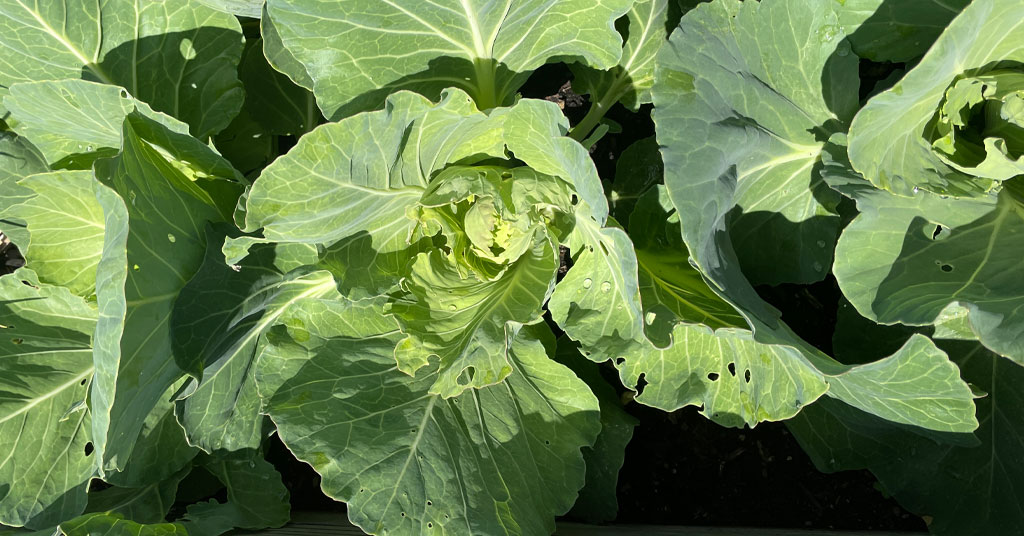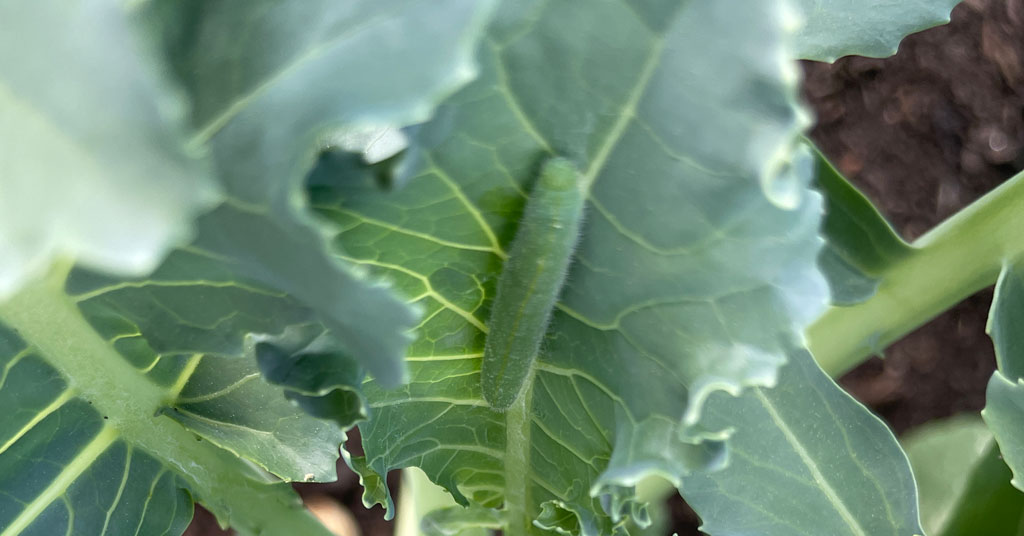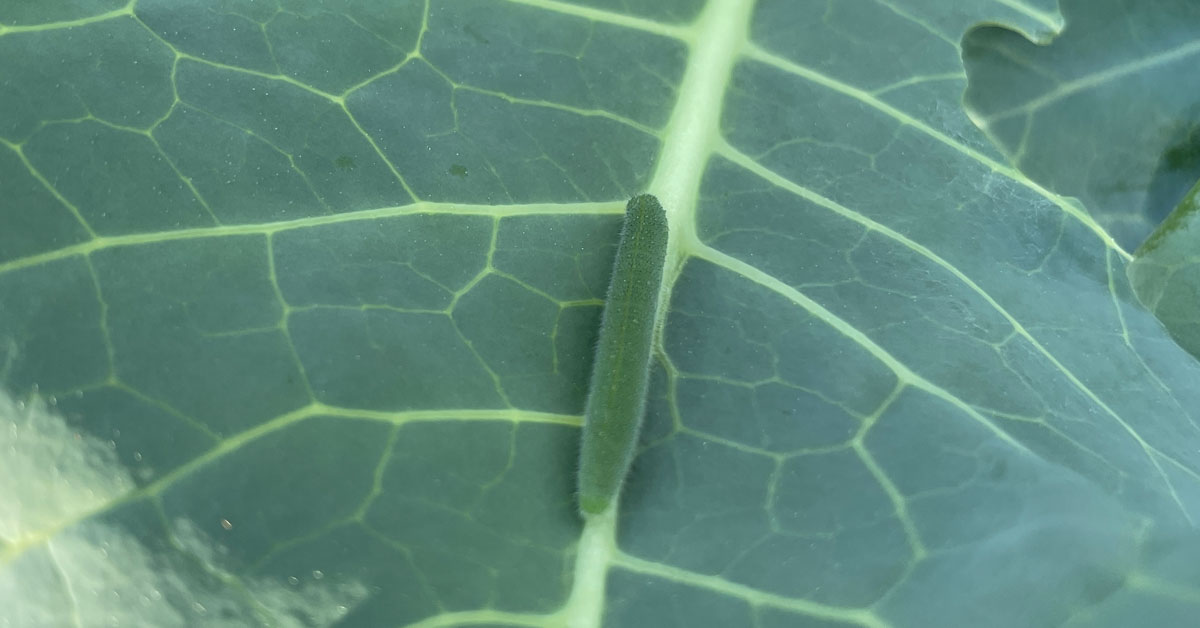This post may contain affiliate links. When you purchase through links on my site, I may earn a commission at no cost to you. See my Privacy Policy for details.
If you are growing brassicas in your garden you have likely encountered the imported cabbageworm (Pieris rapae). I dread seeing the imported cabbageworm damage in my garden every year. They like to eat the leaves of your plants causing holes or stripping of the entire leaf. They are common throughout North America.
Host plants for Imported Cabbageworms
The host plants for imported cabbageworms are typically from the cultivated mustard family. Plants including broccoli, cabbage, kale, Brussels sprouts, cauliflower, collards, horseradish, and kohlrabi are their typical host plants. Imported cabbageworms can sometimes also be found on some flowers such as nasturtium and sweet alyssum.

Imported Cabbageworm Lifecycle
Two to four generations are typical in northern North America but in the southern U.S. breeding can be continual and there may be as many as six to eight generations in a garden season. Imported cabbageworms overwinter as pupae among plant debris near previously infested plants.
Adults emerge as Cabbage White butterflies and are one of the earliest emerging butterflies in the spring. The Cabbage White has upper wings that are mostly white and the underside of their wings are yellowish. The wings will have dark tips on the forewings. Male Cabbage White butterflies have one black spot on the forewing and the females typically have two black spots. After mating the female Cabbage White butterflies will lay yellow, bullet-shaped eggs singly on the underside of a leaf. She will continue laying eggs for about three weeks.
The cabbageworm larvae will hatch in 3 to 5 days and will begin feeding on the leaves where they are born. The larvae typically eat the outer leaves of plants but as they grow they can tunnel into the heads of broccoli and cabbage. The caterpillars are green with 5 pairs of distinct prolegs. A yellow line runs down the back of older larvae. The larvae are fully grown in 2 to 3 weeks and will start the pupation process again in the vicinity of the host plant.

Organic Pest Control for Imported Cabbageworm
The best way to organically control imported cabbageworms is to cover your seedlings with floating row cover before the Cabbage White butterflies emerge in early spring. This is what I will be doing with my brassica plants next year to ensure that I get ahead of the imported cabbageworms.
If you are not covering your plants with row cover, start checking your plant’s leaves for the yellow eggs and destroy them once you start to see the Cabbage White butterflies in your garden. If you start to see damage to your leaves start looking for the larvae and handpick them off your plants. You may need to look closely at your plant’s leaves because the larvae are typically very close in color to the leaves they are on.
Encourage parasitic wasps to come to your garden by planting small-flowered annuals in and around your garden. You can also create a garlic or hot pepper spray that you can apply to the leaves of your plants. Spray your plants weekly when butterflies appear. As a last resort, you can spray your plants with BT (Bacillus Thuringiensis) or spinosad when you find small cabbageworms on your plants. I prefer to handpick the larvae off my plants if possible.
Delicious Brassicas
Don’t be afraid to plant your brassicas this season. Just because you may find the imported cabbageworm in your garden this year doesn’t mean you can’t have a delicious brassica crop. Try your best to stay on top of searching for these pests and hand-picking them off your plants. I can’t wait to hear about your delicious harvest this year. Have you found any other garden pests in your plants? I also have a problem with Mexican Bean Beetles. See how I control them in this post: Mexican Bean Beetles.

